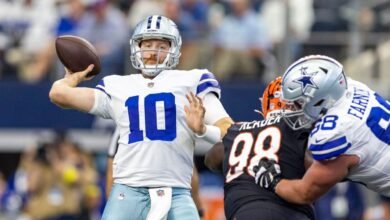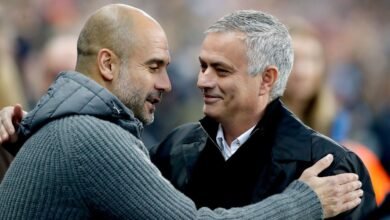Remembering Pete Rose the player: Charlie Hustle to the end

When I first started watching baseball, Pete Rose was the biggest name in the sport, so popular that fans of opposing teams loved him, so admired among sportswriters that they couldn’t constrain their prose, so likeable that he did ads for Jockey underwear and Aqua Velva and Swanson’s Hungry Man Dinners and Zenith televisions.
The great Los Angeles Times columnist Jim Murray dedicated an entire chapter in his autobiography, published in 1993, to Rose. “He was what the game meant to be — or how we perceived it be,” Murray wrote. “Rose was a ballplayer right off the Saturday Evening Post cover. Norman Rockwell invented him. Pete was as uncomplicated as a summer day, as instinctive as a hound dog. He was born to hunt, or, in his case, play baseball. He never wanted to do anything else. He never could do anything else.”
For a while, that was the story. Nobody played harder. Nobody got more out of his limited ability. During the middle of the epic Game 6 of the 1975 World Series between Rose’s Cincinnati Reds and the Boston Red Sox, Rose supposedly turned to Red Sox first baseman Carl Yastrzemski and said, “Isn’t this just great?! Aren’t we lucky?! Can you think of anything you’d rather be doing?!” Or maybe he said it to Red Sox catcher Carlton Fisk. Or maybe he said it to manager Sparky Anderson after the game, even though Cincinnati had just lost in 12 innings.
The details aren’t important. The point was nobody loved baseball more than Pete Rose. He turned that hustle and that desire and that love into a 24-year career, knocking out more base hits than any player in MLB history — 4,256 of them, breaking Ty Cobb’s record.
Everything that came after — well, it’s all there. The betting on baseball, the denials, the banishment, the unending Hall of Fame debates. All ugly, none of it fun, all things Rose brought upon himself.
Pete Rose the player, however, is a fascinating study. Along the way, he was underrated and overrated and then underrated again.
A local kid from Cincinnati, the Reds signed Rose in 1960 (before the draft began in 1965). An early scouting report read: “Can’t run, hit, throw or field. All Rose can do is hustle.” That was a little unfair, because he could clearly hit some: .331 at Class D Tampa in 1961 (where he also hit 30 triples, so maybe he could run a little as well); .330 at Class A Macon in 1962; .273 as a rookie with the Reds in 1963, winning Rookie of the Year honors.
The hustle description, though, was apt. Mickey Mantle supposedly gave Rose his famous “Charlie Hustle” nickname after watching the youngster in a spring training game, probably after seeing Rose sprint to first base following a walk. He did not mean it as a compliment.
But I’m not quite sure when that became the nickname. A headline from a Sports Illustrated story in 1965 refers to Rose as “Joe Hustle,” a nickname from his minor league days. It doesn’t have the same ring to it. That story focused on Rose spending the previous winter in Venezuela, trying to improve his ability to turn the double play. Because he had improved in the field, Phillies manager Gene Mauch called Rose the most valuable player in the National League — a bit of an exaggeration, but Rose did finish sixth in the voting that season after he hit .312 with 209 hits and 117 runs.
By 1968, he was Charlie Hustle. He had moved to the outfield. Rose’s defensive versatility was an asset throughout his career; he ended up a regular at right field, left field, third base and first base after beginning his career at second base (and he started All-Star Games at all five positions).
Rose hit .335 in 1968 — an impressive average in that year of the pitcher — to win the first of his three batting titles; only five other players even hit .300 that season. Back then, Rose was known as decidedly old school. As ballplayers began — gasp — growing sideburns, Rose still kept a crewcut. Asked why in a Sports Illustrated story, he responded, “Because we have razors and barbers in Cincinnati.” He made $57,000 that year. “I want to be the first player who is not a 20-game winner or a big home run hitter to make $100,000 a year,” he said. He got there in 1970.
Rose was a machine of production, rarely missing a game and chasing a .300 average and 200 hits like a dog chasing a ball. He hit .300 nine years in a row from 1965 through 1973, missed a year in 1974, and then did it five more times straight. He had 200 hits in 10 different seasons, leading his league in hits seven times overall.
He won an MVP Award in what was pretty much a typical year for him: He hit .338 in 1973 with 5 home runs, 64 RBIs and 115 runs, although he did pound out a career-best 230 hits. It was an excellent season, no doubt (although teammate Joe Morgan probably should have won that year). But the writers respected Rose so much, they gave him a lot of extra credit for the Reds’ success. They ran quotes like this one from a Reds coach: “He resembles no other player I have ever been associated with or even seen. Recently in Houston, Doug Rader told me, ‘Just playing against that guy inspires me.'”
How could you not give him the MVP Award when he inspired opposing players?
In 1975, the Reds — after playoff losses in 1970, 1972 and 1973 — finally won the World Series, beating the Red Sox in Game 7. The team was struggling early that season and getting no production at third base. Rose volunteered to move there, which opened up left field for George Foster. The Big Red Machine was born. Rose hit .370 in the World Series and won MVP honors (even though he scored only three runs and drove in two).
Early in the 1978 season, Rose picked up his 3,000th hit. Later that summer, he put together a 44-game hitting streak — the best challenge yet to Joe DiMaggio’s record. He stated his ultimate goal was “3,630” — Stan Musial’s National League record for hits. Cobb wasn’t even on the horizon.
“Nobody resents all the attention Pete gets,” Hall of Famer Johnny Bench told the New York Times during the streak. “He is goal oriented, and reaching his goals helps us reach ours.”
In one sense, all these highlights and achievements made Rose a little overrated. His career high in home runs was just 16. After he turned 31, he reached double digits just once more. While he was a good outfielder, he was a pretty bad third baseman. In 1975, for example, he finished fifth in the MVP voting — and was named Sports Illustrated’s Sportsman of the Year — even though we now retroactively credit him with 4.1 WAR, just 18th among NL position players.
Following the 1978 season, he signed as a free agent with Philadelphia, shocking the baseball world. He was 39 years old and coming off a season in which he hit seven home runs, but after signing a $3.2 million contract, the Times wrote, “The wildest auction in baseball history ended today when Pete Rose signed a four-year contract with the Philadelphia Phillies for $800,000 a year and became the highest‐paid player in the game.”
It was a big contract for a player with little power who had to move to first base. But it’s hard to say it wasn’t worth it for the Phillies: They won their first World Series in 1980 with a 40-year-old Rose (who hit one home run all season). Rose made a famous play in the World Series when a crucial foul pop-up bounced off the glove of catcher Bob Boone — and into Rose’s glove, who was there shadowing Boone. It was almost as if Rose had willed the Phillies to a title (they also had Mike Schmidt and Steve Carlton).
And eventually, in another sense, Rose became underrated again. After his retirement, as analytics entered the game, it became de rigueur to call Rose overrated — just a singles hitter. There is no doubt Rose was the ultimate numbers chaser — whether getting to 200 hits in a season or later hanging on just to catch Cobb — but it’s not exactly fair to call him just a singles hitter.
Rose led his league in doubles five times; his career total of 746 ranks second all time. He had a good eye at the plate, posting on-base percentages above .400 five times; he led the league in another season. He ranked in the top 10 in the NL in OBP 11 times — and even three times in OPS. The combination of his ability to get on base, his durability and the fact that he hit leadoff throughout much of his career (with a good lineup behind him!) led to a lot of runs scored — four times leading his league, another six times finishing second or third, and the sixth most of all time.
Using those modern analytics, he had 79.5 career WAR, sandwiched between Jeff Bagwell and Joe DiMaggio. That ranks above Brooks Robinson and Robin Yount, below Chipper Jones and Rod Carew. Does that make him overrated or underrated? He’s not in the class of Henry Aaron or Rickey Henderson or Schmidt — the inner circle of the inner circle — but he’s an all-time great for his play on the field. The career hits record, I would certainly suggest, exaggerated his overall performance in the eyes of the average fan, and became conflated with that image of the hustler, the overachiever, the guy who played the game how it was supposed to be played.
Indeed, in Rose’s final sit-down interview earlier this year with the Cincinnati Enquirer, that was one of his quotes: “I played the game the right way.” Charlie Hustle to the end.
Source link



